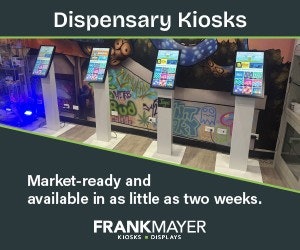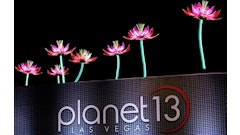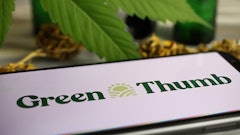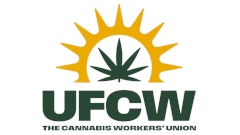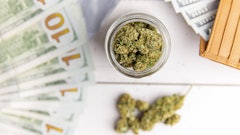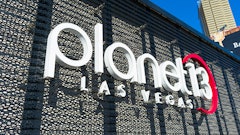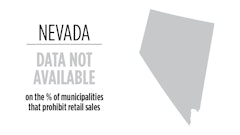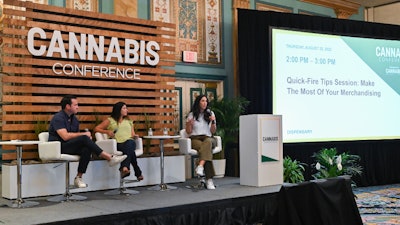
The cannabis industry has been dealing with mass price compression that impacts how retailers make pricing and promotional decisions, and how they add inventory to their stores.
A well-thought-out merchandising strategy can help your business stay afloat amid market challenges, boost sales, increase consumer retention, build relationships, and much more.
From running specials to positioning products and displays in the store, Krista Raymer, founder of Vetrina Group, a Canada-based cannabis consulting firm, Chris Lane, chief marketing officer at Gold Flora and Airfield Supply Company, a California-based, vertically integrated cannabis company, and Lilach Mazor Power, owner of Mazor Collective, an Arizona-based vertically integrated cannabis company, shared merchandising strategies at Cannabis Conference 2022 to help retailers boost sales.
"When we are thinking about price compression and the way this shows up in the retail market, obviously, that pricing compression is happening from a wholesale perspective as well as an in-store perspective," Raymer said. "Customers often forget or don't know that this is happening in the background. As we have seen saturation come into markets like California, Colorado, and Michigan, … it's creating a situation where retailers and brands are trying to pull a number of different levers to either maintain their business or increase their market share in those spaces."
Raymer added that this has caused many retailers to fall into a pattern where consumers are looking for the cheapest-priced products, which is driving retailers' decisions on how they build promotional plans and display products in-store.
Lane said it is surprising to see many operators becoming complacent with offering various deals, promotions, and discounts.
"[Most people] are just throwing it all at the wall and will jump on anything. More programming, discounts, deals, ... all these different things," Lane said. "In an industry that is so young and needs to be looked at long term, it is just incredibly short-sighted thinking. ... We are at a crossroads. Retailers and brands both have an important job of holding that pricing to the extent that they can, when they can, to be able to create value. … If you are building a brand and building differentiation that people want to come back to, that creates value, and that value is worth something."
Evaluate the Unintended Consequences of Bogos
To Power, one of the most crucial aspects of running a retail business is "controlling your destiny."
"When you run a retail store, you decide what brands [and products] sell," Power said. "Everything in the store has to be controlled by you, or the market will control your destiny, which is what we are seeing."
Although the market landscape influences retailers' merchandising strategy, retailers should consider several factors before offering a discount, markdown or promotion.
"The discount will need to generate enough velocity to offset the cost of doing a discount, … and if we are driving more velocity, where will that come from?" Raymer said. "We either need to capture more customers and drive that velocity through those new customers, or we need to convert on the customers that are already making the decision and convert that basket share."
Another consideration regarding a promotion is it can control how often consumers come to your store and how much they will spend, Power said.
For example, suppose you offer a buy three, get three on vape cartridges. In that case, the unintended consequence of providing a BOGO like that is that the consumer may not return to the store for two months or longer.
"If we want to continue to grow and engage with our customers, more visits are going to be a much more effective strategy to build trust and a relationship with your customer," Raymer said. "So, creating a promotion that is pushing out the amount of time and the number of visits they make in a year is not going to be the most effective strategy in maintaining a customer."
Moreover, Lane said it's crucial to determine your "why" and implement that into your merchandising strategy.
Last year, Lane said he saw several brands shift their strategies just to gain market share and get on shelves.
"Brands are starting to get aggressive," Lane said. "A brand is what people say about you when you are not in the room. And when you are doing these tactics, … you are letting people talk about the fact that you have a deal. If all you are is a deal [and] if the deal down the street is cheaper [and] it's better, [then] you have nothing else to fall on.
"If you build a brand at a retail and product level that is about something much deeper than simply what you are selling and what you are putting in a box, you are creating a completely different experience with a customer."
Think Twice
An increasing trend in the industry is brands paying for shelf space—essentially, a cost manufacturers pay to place their products on retail shelves.
In some cases, depending on the specific agreement between the brand and store, the brand that pays for shelf space or promotional placements may have privileges or influence over the advertising and displays within the store.
"This is becoming a thing in Arizona. People are buying shelf space, and some stores make a big revenue from it. ... We don't do that in our store," Power said. "Ensuring what we offer to the customer is what we believe in has been very important for us. … If an outside seller can control your store, you have lost your way and margins."
Consider Your Touch Points
Experts say that a consumer needs to "be touched" by a product or message at least seven times before deciding to buy.
"When we are mapping out touch points, especially in cannabis retail, you have to think that your interaction and touch point with the customer probably comes way before they are in the store," Lane said, adding that research shows about 70% of American consumers shop with multiple channels before they make a purchase.
Examples of touch points outside the physical store are referrals, social media, online advertising and email campaigns.
Lane said it's crucial to consider and implement a strategy for these different touch points so that consumers are ready to make a purchase when they are in the store.
"What does your digital presence look like? What does your e-commerce presence look like? … I think you must be thinking of it as that long-term funnel," he said. "When you are in store, what is the signup flow? What's the interactive process? What are you doing from an interactive education [perspective]?"
Strategically Map Out Your Store
Strategically mapping out your product displays and retail floor can help improve customer experiences, help consumers make informed decisions, increase sales and more.
"We opened our adult-use store in January of 2021, and we created an environment based on display. There are no counters between you and your seller. They will either let you be, or sit with you or walk with you," Power said, adding that the company is also flexible with its displays and often changes them based on consumers and how they walk in the store.
Lane referenced some of the strategies Costco uses in its store to direct traffic flow.
"The two things in Costco that barely move are the chicken; it's all the way in the back, and it's one of the best deals, so they make you go all the way in the back. And the second is the higher priced electronics and diamonds and things that are always in the front," Lane said. "So, you create a consciousness that those are the highest priced items and everything else in the store is cheap."
The Airfield team spends a lot of time thinking about the strategies and design of its in-store touch points, Lane said.
"When you are thinking about it, you want people to feel like they are shopping even if they are just standing in line," he said. "From a display, you can expose people to different categories that you know are high-performing or underperforming. … It's about thinking about the strategy of how people make their way in the purchasing process. Make sure you map the appropriate piece. Don't go too heavy too quickly, and don't wait until the very end to give them a passive message. Find the right way to work with their brand."
Join us this year at the Paris Las Vegas Hotel & Casino for Cannabis Conference, the leading education and expo event for plant-touching businesses.



